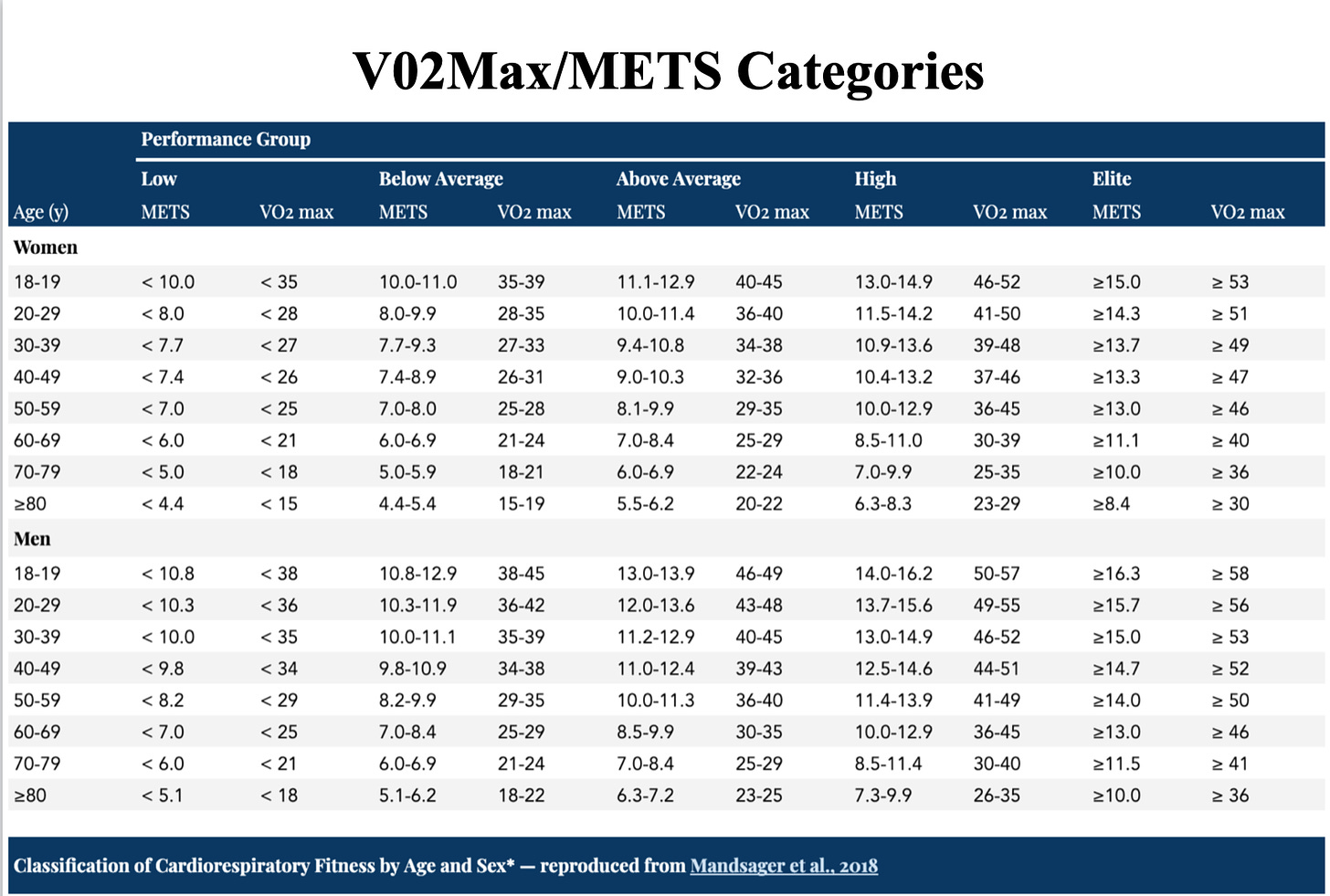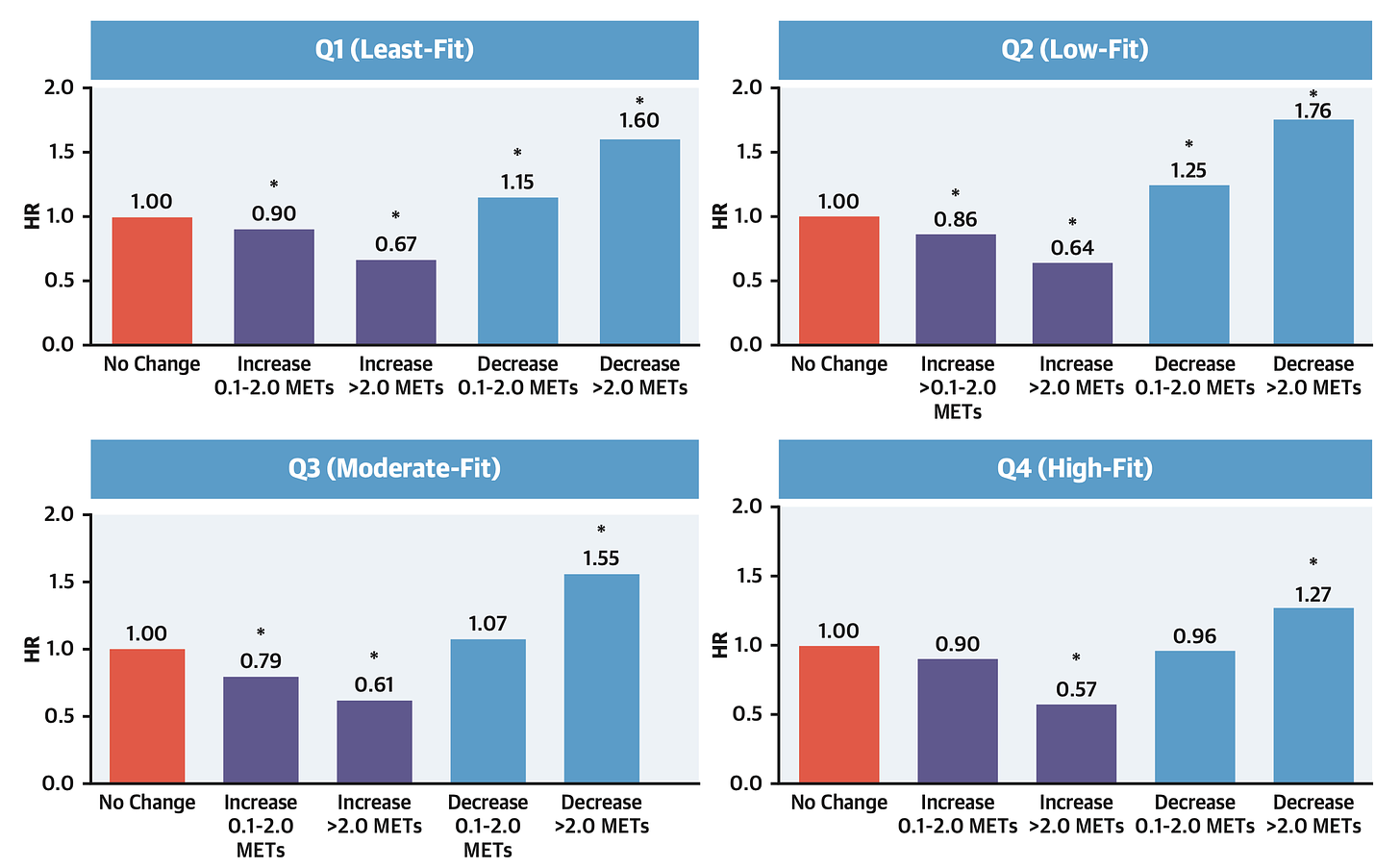Stress Tests Are Useful But Not For The Reasons You Might Think

It is not unusual for a patient to show up to their first consultation dressed in gym clothes.
The reason they have chosen to wear gym clothes is that they expect to do an exercise stress test as part of their assessment.
Because if you are ‘getting your heart checked’, you must do an exercise stress test, right?
Well. Not any more.
Here’s why.
Let’s first state our goal when we are in the business of ‘Heart Disease Prevention’:
To delay the onset of coronary artery disease (atherosclerosis/plaque) that might rupture and cause a heart attack.

The key thing to understand here is that, generally, the more plaque you have, the higher the risk of an event such as a heart attack1.
And the less plaque you have, the lower the risk of a heart attack.
If you have no plaque, then your risk of a typical heart attack is close to zero in the near term.
So the key here is whether you have plaque and, if so, how much.
Do exercise stress tests tell you whether or not you have plaque in your coronary arteries?
No.
Exercise stress tests can indicate if there is plaque causing an obstruction to flow down the artery, but they are not looking for the plaque itself.
All doctors know this (Or at least they should), but most patients don’t.
However, it is not uncommon for a patient to have a stress test because they are worried about heart disease, ‘pass it with flying colours’ and be told that “All is well”.
Their family, of course, are somewhat confused (angry) when the patient has a fatal heart attack three days after they “Passed their stress test”.
But, the stress was not looking for the presence of plaque in the coronary arteries.
It was looking for the presence of an obstruction to flow down the artery.
This distinction is crucial to understand as most heart attacks result from plaque ruptures of less than 70% stenosis, which is the type of narrowing missed by most exercise stress tests2.
This is not to say that plaque of less than 70% is more dangerous; it’s just that it is silent and without symptoms.
And it’s also WAY more common.
So you can have a perfectly normal stress test and still have lots and lots of plaque.
Surprised?
You shouldn’t be.
But many people are.

So, is there any value in the information obtained during an exercise stress test?
The answer is yes.
But it’s not related to whether or not you have any plaque in your coronary arteries.
The standard stress test involves a protocol of a patient exercising at progressively higher workloads until a predetermined endpoint, either a target heart rate, suspicious ECG changes or the occurrence of chest pain, etc.
The report you receive at the end of the test will include all these details and one other key variable:
The number of METs you achieved.
MET stands for Metabolic Equivalent of Task and is a measure of the amount of energy you expended during the test.
1 MET is the amount of energy expended while sitting at rest.
10 METs roughly equates to the amount of energy expended playing a game of competitive soccer.
There is a clear relationship between the number of METs achieved during an exercise stress test and the chances of dying from ANYTHING in the next decade or so, not just heart disease3.

The more METs you can expend, the less likely you are to die in the near future.
The most commonly used exercise protocol is the Bruce protocol, and the relationship is clear.
More METs. Longer Life.
Here is a chart you can use for reference, which will also give you an indication of your V02 Max based on the METs achieved.

The reason why more METs equate to a longer life is likely multifactorial, and the ability to expend a significant amount of energy mostly relates to your degree of aerobic fitness prior to the test.
So, we now know that achieving fewer METs is associated with worse outcomes.
But what if you start to exercise more to improve that figure?
Does it decrease your odds of dying FROM ANY CAUSE over the following decade?
The answer is Yes.
At baseline, whether you have cardiovascular disease or not, the more energy you can expend during a stress test, the longer you are likely to live4.

However, when you retest each person after approximately six years, you can see whether their fitness, as measured by the number of METs they can expend, has gotten better, worse or stayed the same.
Compared to no change in fitness over the six years, those who increased the amounts of METs they could expend improved their odds of survival regardless of their baseline fitness levels.
Those in the least fit category at baseline who increased the number of METs they could achieve by more than 2 were 33% less likely to die.
Those who lost more than 2 METs were 60% more likely to die.
What is most interesting is what happened to the baseline high-fitness individuals.
Although they already had the best odds of surviving at baseline, if they increased the number of METs they could achieve by more than 2 METs, they were 43% less likely to die.
You can always do better.

The trajectory is clear.
Regardless of your baseline fitness level, if you improve it, you increase your odds of survival.
If it gets worse, you decrease your odds of survival.
This is why you need to exercise as if your life depended on it.
Because it does.
“Was my stress test a waste of time?”
The answer is no.
But you need to see it more as an assessment of your functional capacity and how it changes over time rather than a test that looks directly for plaque in your coronary arteries.
There is tremendous value in the information obtained during an exercise stress test.
It's just often not commented on.
So the next time you get a stress test and the doctor says that you “Passed with flying colours”, ask them for the number of METs you achieved and decide for yourself if you got a good result.
But even if you didn’t get a good result, you now know what to do to improve your odds.
Time to get to it.
Impact of Plaque Burden Versus Stenosis on Ischemic Events in Patients With Coronary Atherosclerosis. J Am Coll Cardiol. 2020 Dec, 76 (24) 2803–2813
From Detecting the Vulnerable Plaque to Managing the Vulnerable Patient: JACC State-of-the-Art Review. J Am Coll Cardiol. 2019 Sep 24;74(12):1582-1593.
Prognostic Value of Functional Capacity in Different Exercise Protocols. J Am Heart Assoc. 2020 Jul 7;9(13):e015986.
Changes in Cardiorespiratory Fitness and Survival in Patients With or Without Cardiovascular Disease. J Am Coll Cardiol. 2023 Mar 28;81(12):1137-1147.




